“Energy flows where intention goes, karma returns what you give, and the soul journeys on through each rebirth to learn and evolve.”
📖 12 minutes read time
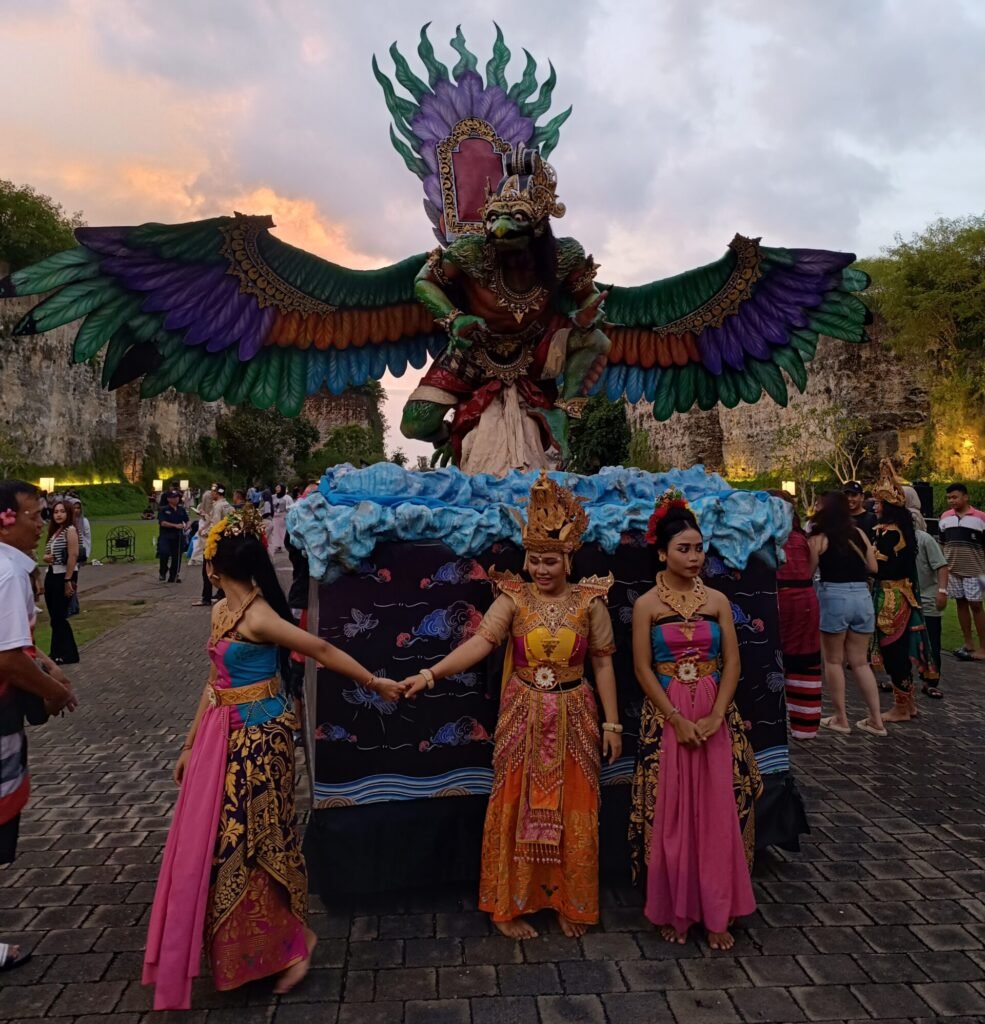
Tegalalang Rice Terrace
Located just north of Ubud, this iconic landscape is more than just a breathtaking view, it’s a window into Bali’s deep-rooted connection with rice. The rice terraces stretch out in green layers down the hillside, showing the traditional way rice has been grown for generations. As you walk along the narrow paths, you can take in the peaceful view and see how nature and farming work together. Tegallalang is one of the most well-known spots in Bali, and for many visitors, it’s the first image that comes to mind when they think of the island.

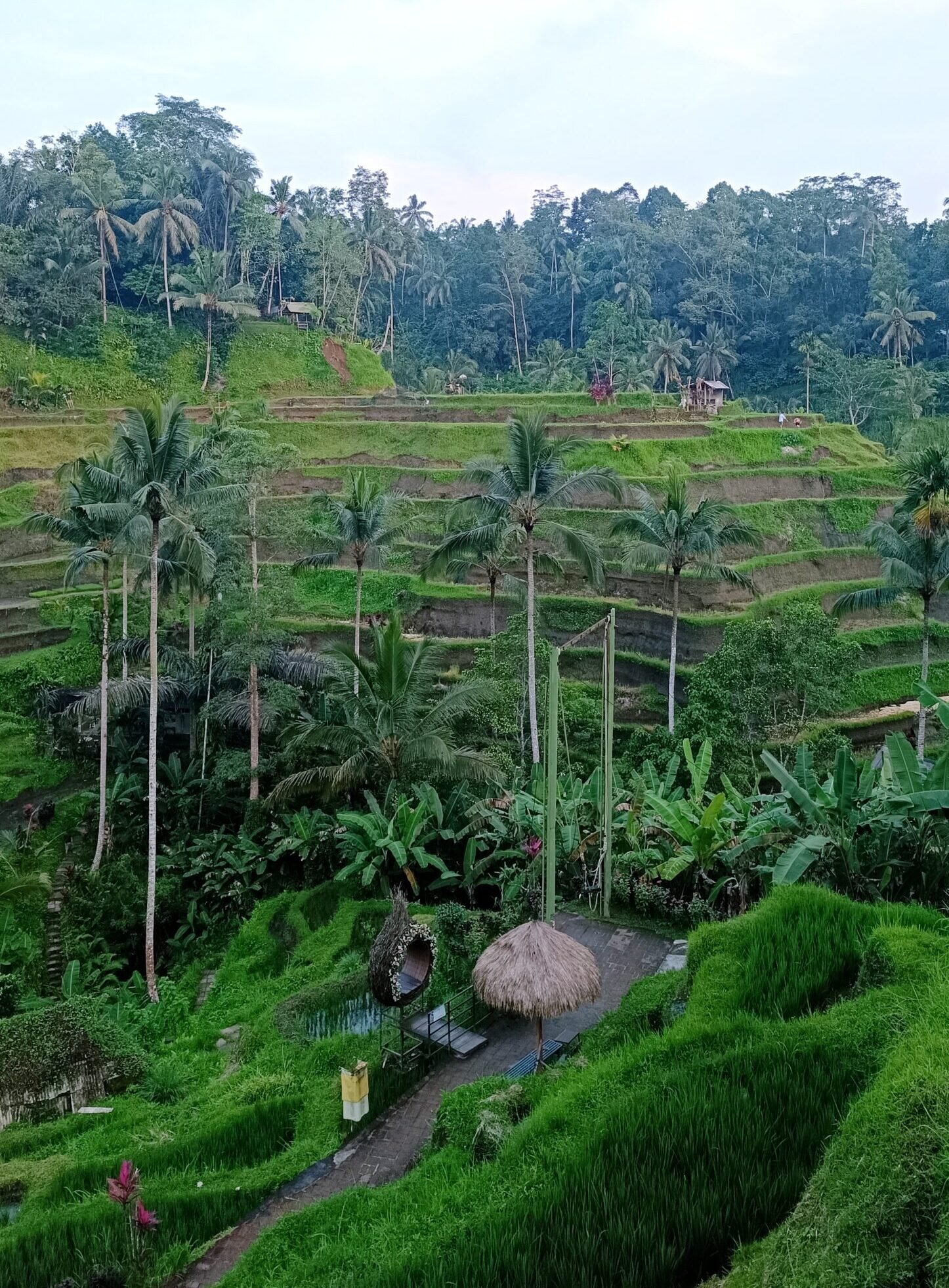
One interesting fact about the Tegallalang Rice Fields is that they use an ancient cooperative irrigation system called Subak. The Subak system is a traditional way Balinese farmers share water for their rice fields. It’s been used for over a thousand years and is managed by the community. The water comes from rivers or springs and flows through small canals to each rice field. It’s also connected to Balinese religion and farmers believe water is a gift from the gods, so they hold ceremonies at special water temples to keep everything in balance.
Rice fields are iconic in Bali, especially places like Tegallalang and Jatiluwih, but they are not unique to the island. Other regions in Southeast Asia, such as the Philippines, Vietnam, Thailand, and particularly Java in Indonesia, also have famous rice terraces. That said, Bali’s rice fields are among the most internationally recognized due to their accessibility, integration with cultural tourism, and the island’s popularity. The Subak system is even a UNESCO World Heritage feature.
Nusa Penida
Nusa Penida is the largest of three islands off Bali’s southeast coast, alongside Nusa Lembongan and Nusa Ceningan. Unlike the more developed parts of Bali, the island feels raw and untouched, with narrow and steep roads through the jungle leading to hidden beaches and cliffside temples. A short boat ride away, it’s a must-visit for travelers seeking adventure, incredible views, or simply a quieter side of paradise.
Kelingking Beach
Nusa Penida is a home to some of Bali’s most iconic spots, like Kelingking Beach, often called the “T-Rex cliff” for its unique shape. This is undoubtedly the most iconic and picturesque spot on the island. If there were a picture on a postcard for Nusa Penida, this would be it. As the island’s most popular destination, it’s almost always crowded, with people lining up to get that perfect photo. If you’re planning to pose for a picture, be prepared for busy crowds and frequent traffic around the area.

I suggest booking a driver before arriving. This way, you can easily get around the island and visit the most popular spots in just one day. Locals know the roads well, and having a car with air conditioning and drinking water is a big plus. Taking a ferry from Sanur Port in Bali is probably your best bet. The ride is very pleasant and takes around 40 minutes to reach the port at Nusa Penida.
The area is also home to monkeys, and unlike other spots in Bali like Uluwatu Temple or the Ubud Monkey Forest, the monkeys here tend to be calmer and more friendly. While you wait in line for your photo, you might spot a few lounging nearby. After you’re done taking in the view, cool off with some fresh coconut water straight from the coconut before heading to your next stop.
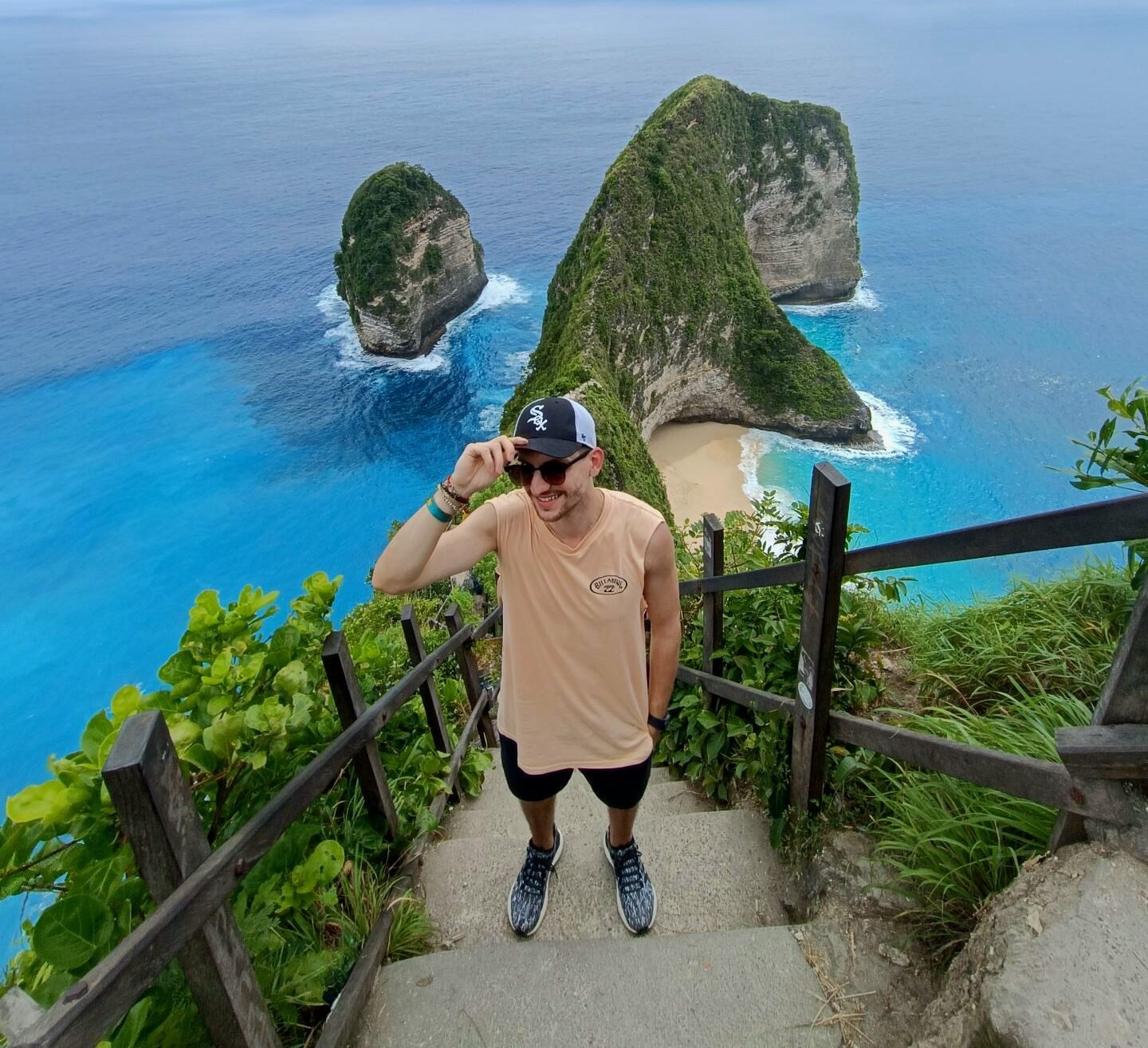
Fun fact: An 182-meter glass elevator is being constructed to transport visitors from the clifftop down to the beach, replacing the steep and challenging descent currently required. This project has sparked controversy among locals and tourists alike. While some support it for improving accessibility and boosting tourism, others express concerns about environmental impact and the alteration of the natural landscape.
Diamond Beach
Another famous beach on Nusa Penida Island is Diamond Beach. With just one look, you’ll understand where the name comes from, as the rock formation near the beach is shaped like a diamond. By now, you’ve probably realized that Nusa Penida is home to some truly spectacular beaches you won’t find anywhere else. However, make sure to check the weather before you go, since clouds and rain can greatly affect the experience, especially during the rainy season.
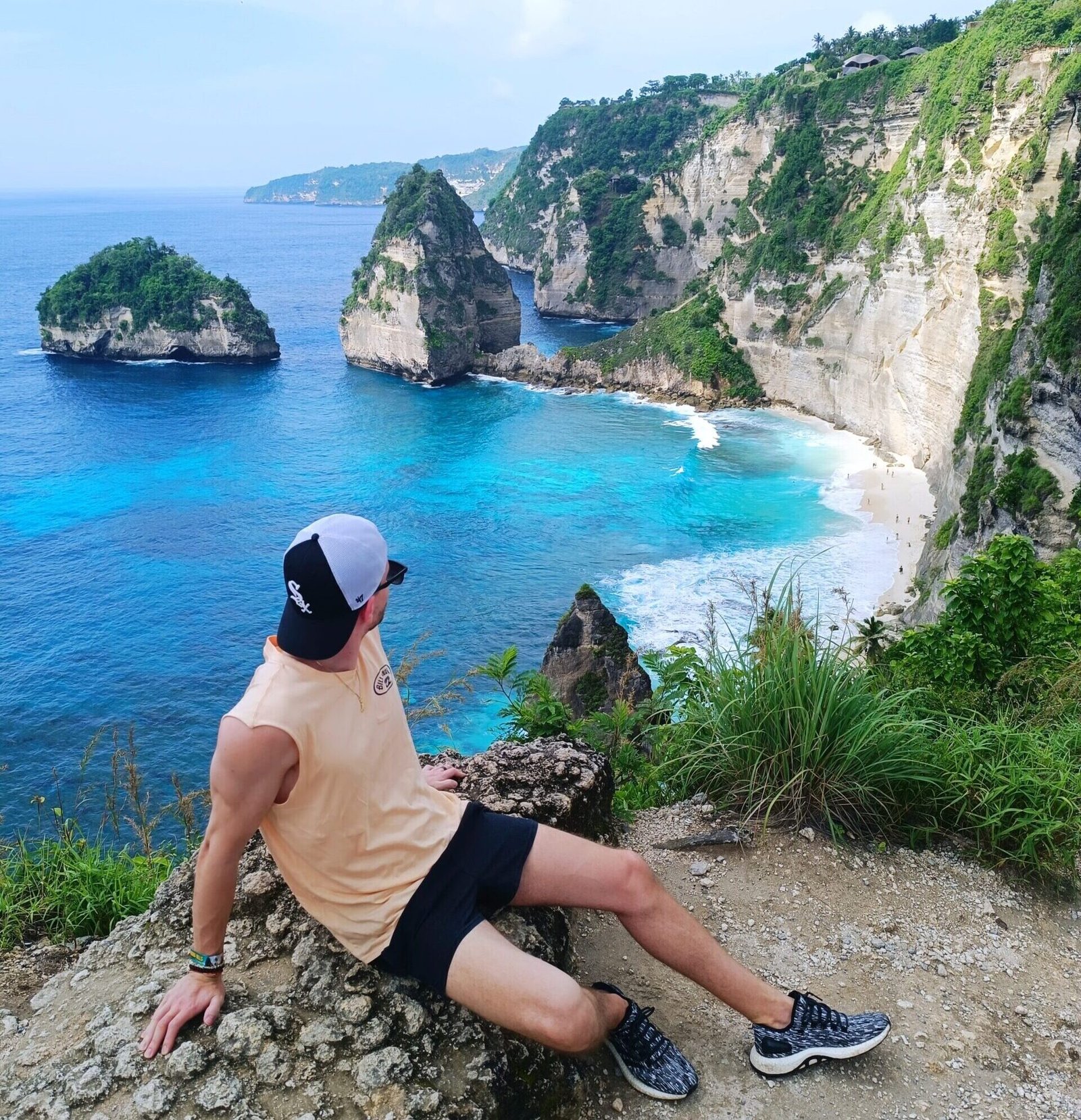
There is also a way to go down to the beach if you want to get a better look at the rock formation or simply enjoy the clear waters. Just be prepared for a steep and narrow path that ends shortly before you reach the beach. To get onto the beach, you need to jump down and run under a giant rock while waves are splashing against it. You have to move quickly if you want to avoid getting soaked or, worse, injured, as the current can be very strong. The photos taken from the beach are beautiful, but the experience is not for everyone. Remember, you can always go down and stop before entering the beach if it feels too difficult.
Uluwatu Temple & Kecak and Fire Dance
Bali is full of unique experiences, and this is definitely one you’ll remember. Uluwatu Temple is beautiful during the day, but when the sun sets, its main attraction, the Kecak dance, steals the show. This Balinese Hindu dance and music drama is performed by a group of men chanting the word “ke-chak” in rhythm, creating a powerful and hypnotic atmosphere. If you’re planning a visit to the southern part of the island, where the temple is located, this performance is a must-see. It’s highly recommended!
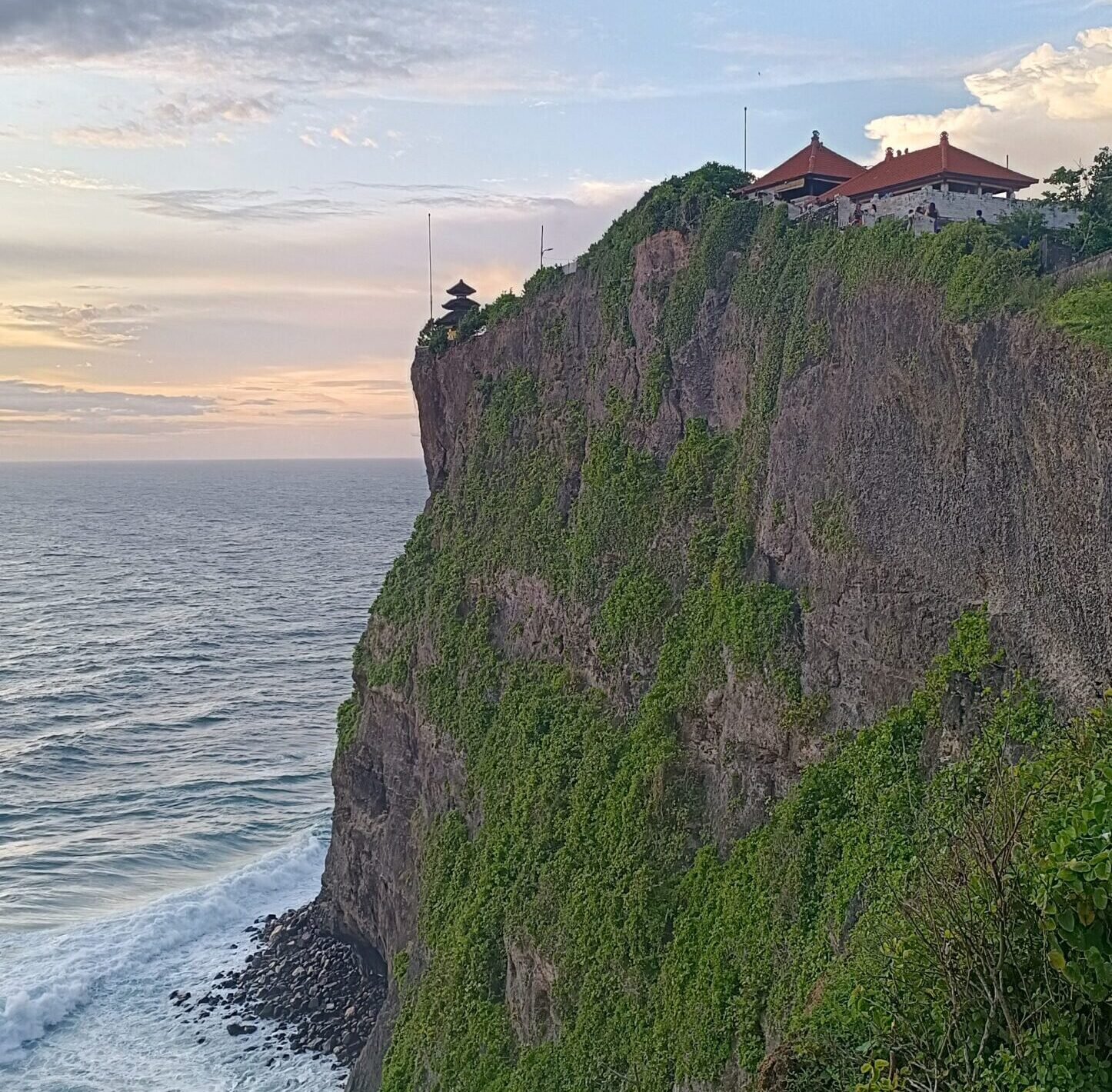
The Kecak Dance tells the story of Prince Rama from the Hindu epic Ramayana, who is exiled to the forest with his wife and brother. The demon king Ravana kidnaps the wife and takes her to his kingdom. With the help of the monkey god Hanuman and an army of monkeys, Rama sets out to rescue her. Hanuman finds her, burns part of the kingdom, and returns to lead Rama’s army into battle. In a dramatic final confrontation, Rama defeats the demon king and is joyfully reunited with his wife.

It is a truly unique experience and a performance you will not find just anywhere. Be prepared to take plenty of pictures and videos at night, and enjoy the performance, fire, and beautiful costumes. Also, don’t be shy about taking a picture with the Monkey God after the show.
TIP: Since this is a night activity, don’t forget to bring mosquito repellent and be very careful with your belongings. The monkeys are literally waiting for you to take out your phone so they can try to steal it immediately. In just a few minutes, we saw multiple people’s phones get stolen. Although the staff tries to chase the monkeys away and offer them food in exchange for the stolen items, the monkeys don’t always cooperate. The temple grounds are home to a large number of monkeys, so don’t take this warning lightly.
Koral: Bali’s First Aquarium Restaurant
In Bali, you can enjoy the unique experience of having a meal underwater. This one-of-a-kind dining opportunity is mainly aimed at tourists, especially couples. The food and service are exceptional, but I recommend going only if you can find some spare time. However, if your time is limited or you are traveling on a budget, I wouldn’t consider this activity a must-do.
Booking, including a deposit, is required in advance and can be done through the official website. The restaurant is part of The Apurva Kempinski hotel, and the entire area is truly mind-blowing. It offers a huge contrast to Bali’s local streets and atmosphere. There are multiple menu options, some with up to eight courses. Expect fine dining featuring bite-sized samples of both warm and cold dishes. You can view the menu online before making your reservation.
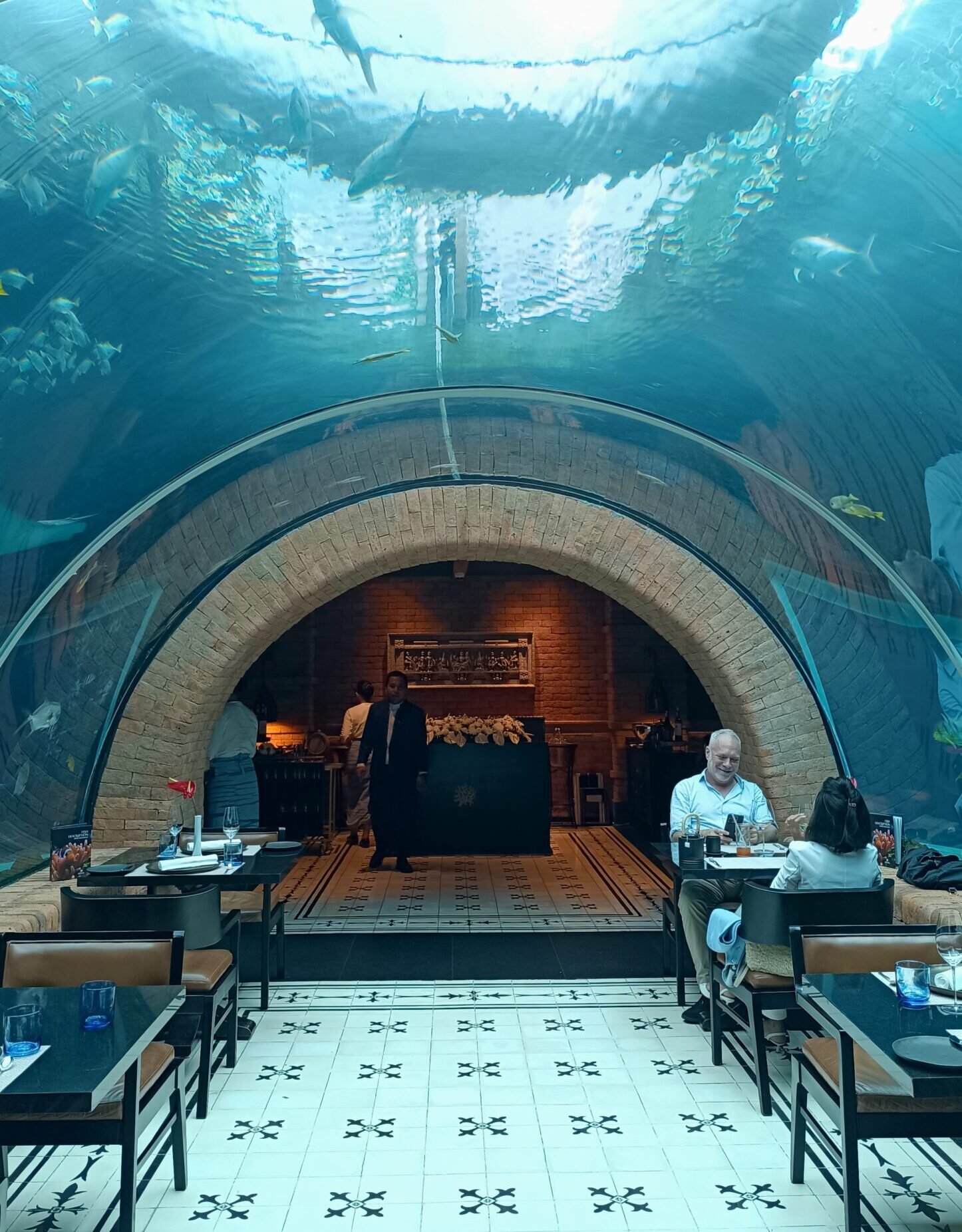
Garuda Wisnu Kencana Cultural Park
Now onto the next attraction, Garuda Wisnu Kencana Park. If you enjoy nature and impressive statues, this is the place for you. While you’ll see many statues throughout Bali, this park is home to the largest and most remarkable ones. It’s a perfect spot for photos, and if you are lucky, you might catch a performance similar to the Kecak dance. Expect quite a bit of walking, but buggies are available to take you to the main points if you want to avoid longer routes. The park has a great atmosphere and is especially beautiful during sunset.
The park is named after the massive statue that can be seen from afar. You will not miss it if you are ever in the area. The statue shows Vishnu, the preserver and protector of the universe, riding the mythical bird Garuda, which symbolizes protection and moral leadership. At 121 meters tall, this statue is one of the tallest in the world and stands as a powerful symbol of Indonesia’s spiritual and cultural heritage.
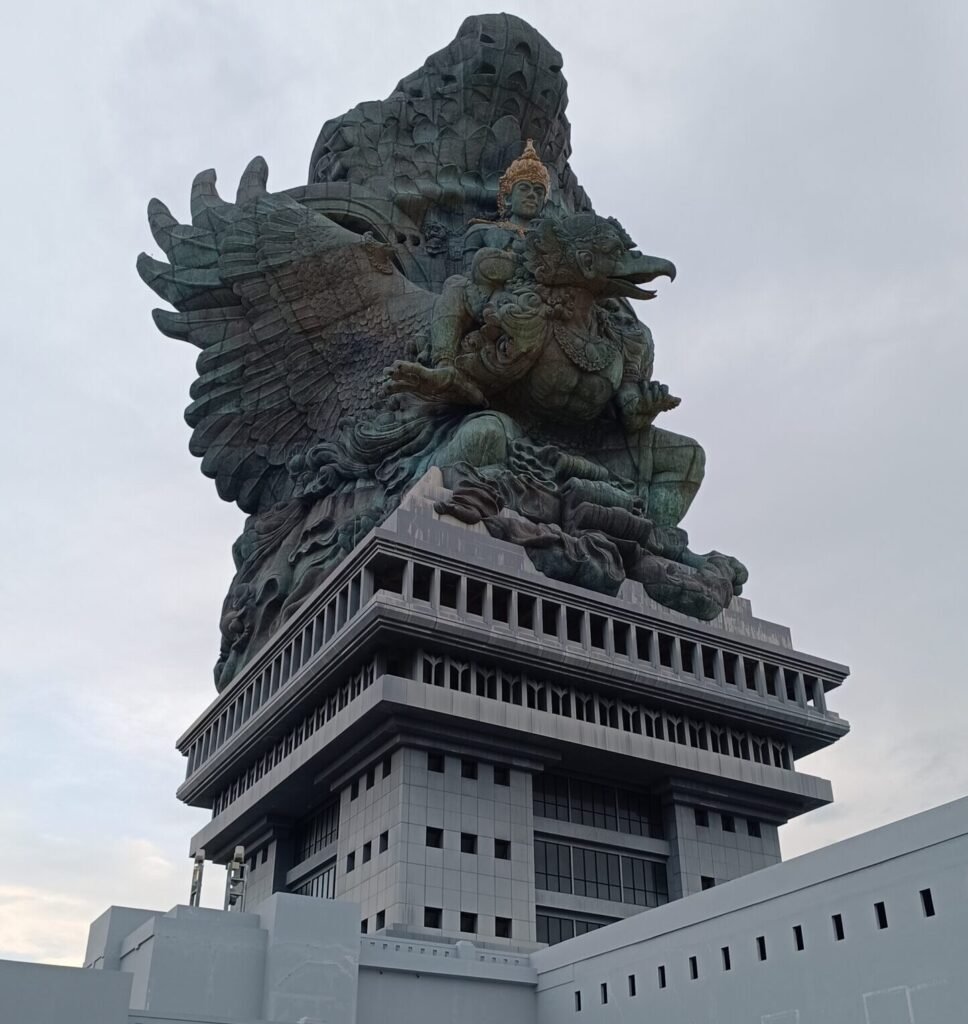

Tanah Lot Temple
Tanah Lot is one of Bali’s most popular tourist spots, located about 20 kilometers from the popular area of Seminyak. It is famous for being built on a rocky formation that sticks out into the ocean, creating a dramatic setting, especially at high tide when the temple appears to be floating on water. It is a Hindu sea temple known for its beautiful ocean views and stunning sunsets.
The temple was built in the 16th century and is dedicated to the sea god Baruna. Locals believe it helps protect the island from evil spirits. There are plenty of shops and food stalls nearby where you can buy souvenirs or try local snacks.

Celuk Swing & Luwak Coffee
Celuk Swing is located in the village of Celuk, near Ubud, and is famous for its scenic jungle swings. The visit offers more than just swinging, you can also learn a lot about Bali’s coffee and tea culture. If you choose to join the tea and coffee tasting, you are in for a wonderful experience.
From Mangosteen and Pandan tea to Avocado coffee, Coconut coffee, and the famous Luwak coffee, get ready to taste at least 15 different and unique flavors of tea and coffee. However, one will surely catch your attention, as it is more unique than any other item on the list.
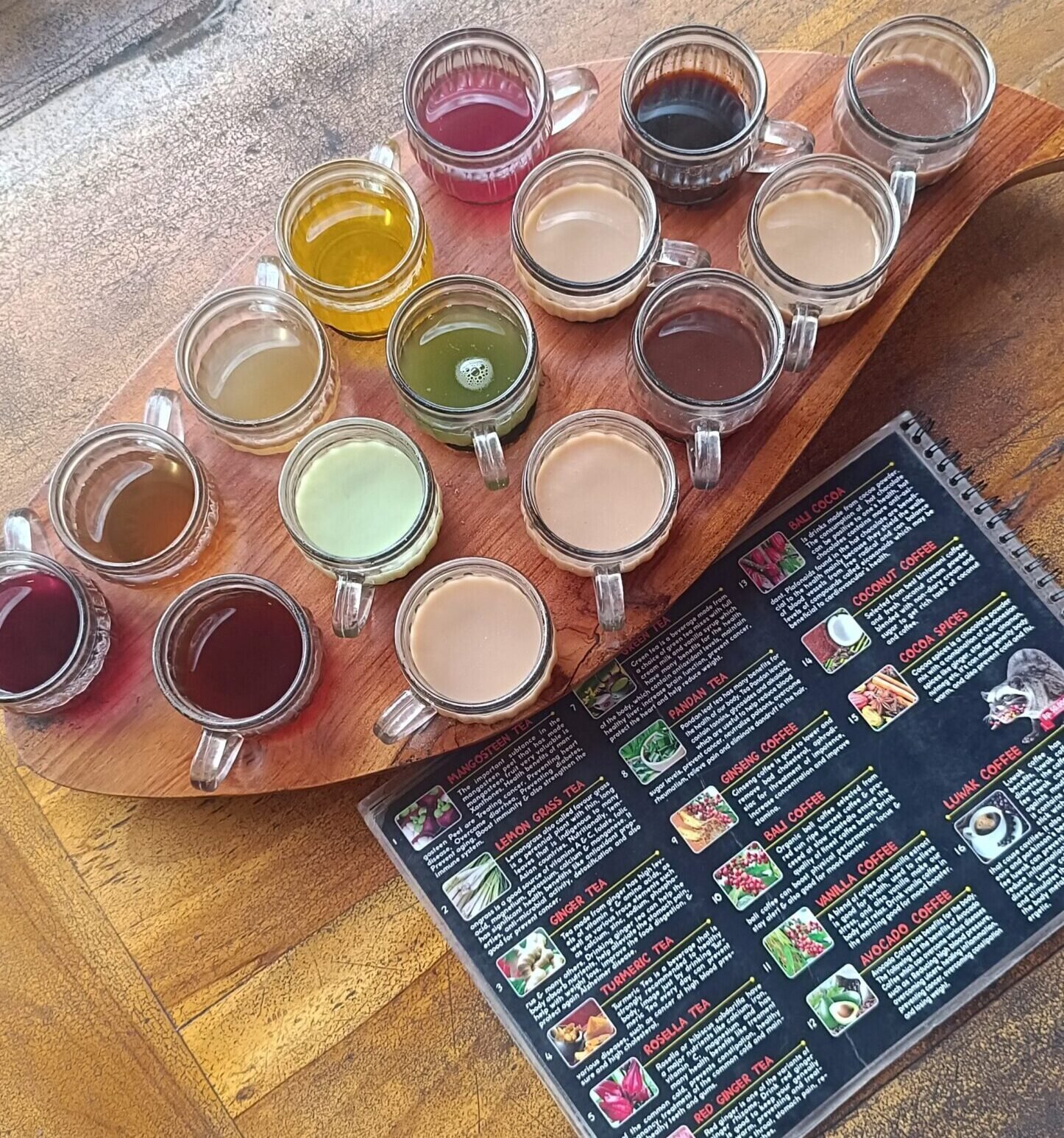
Luwak coffe, or Kopi Luwak, is the most expensive coffee in the world. The coffee is produced using beans that have passed through the digestive system of the Asian Palm Civet. In other words, it is made from the feces of the small mammal found in Southeast Asia. The civet eats ripe coffee cherries, and its digestive enzymes ferment the beans inside its stomach. After the beans pass through the civet’s digestive tract, they are collected from its feces, cleaned, and roasted. This natural fermentation process gives Luwak coffee a smoother, rich and less bitter flavor. The limited production makes it very rare and expensive.

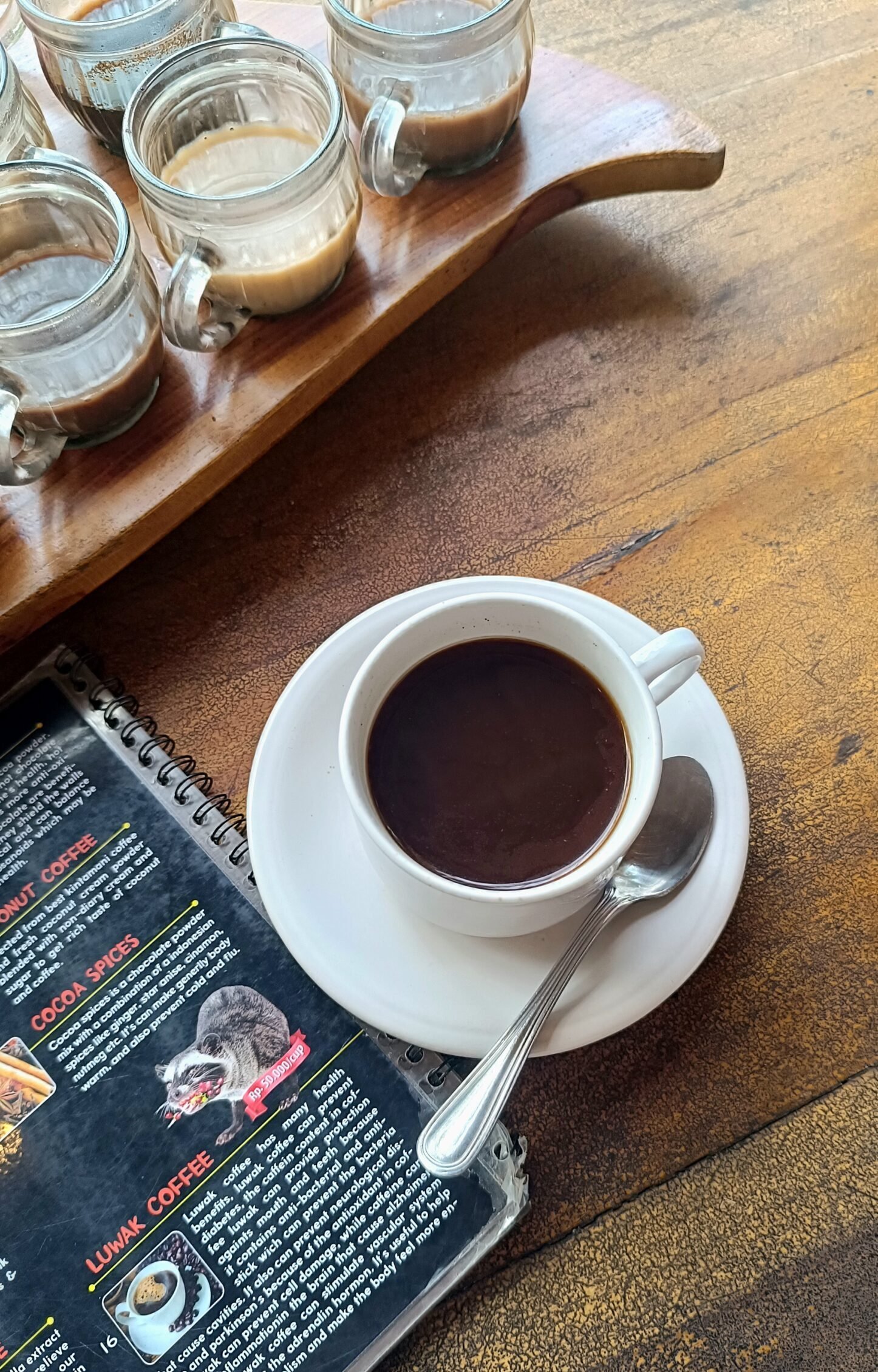
If you dare to try it, Bali is a great place to do so because it is significantly cheaper here than when exported. We had a cup ourselves, and it was actually very tasty. It’s a unique and fun experience, just try not to think about the making process while you drink it. Easy, right?
Bali is a place where people deeply believe in gods, the elements, energy, karma, and reincarnation. Families often have their own temples where they pray and offer gifts to the gods. Because of their belief in karma and reincarnation, locals are very kind and hospitable, always greeting you with a smile. With its rich culture, delicious food, and magnificent natural sights, Bali is one of the best places to visit in Southeast Asia. For a truly authentic experience, try to avoid the most touristy areas and consider hiring a local guide who can show you around and explain the local culture and religion.
TIP: When in Bali, try Durian, the “King of Fruits”. Durian is a large, spiky fruit with a hard shell and soft, creamy inside. It has a very strong smell similar to rotten onions or strong cheese. The taste is sweet and rich, like custard with hints of almond. In Bali, durian prices vary but can be a bit pricey, especially for good quality. Avoid the cheap ones sold near the roads. And remember, because of its smell, it’s often banned in hotels and public places.




